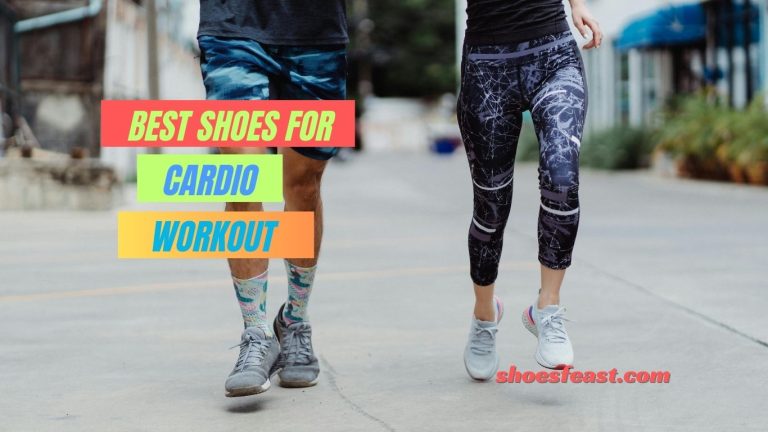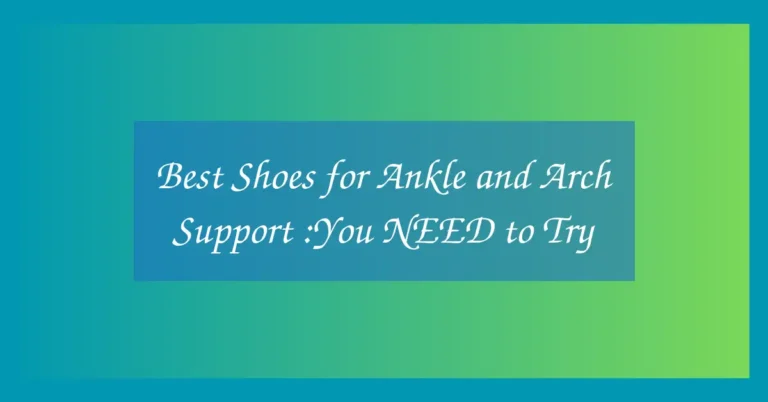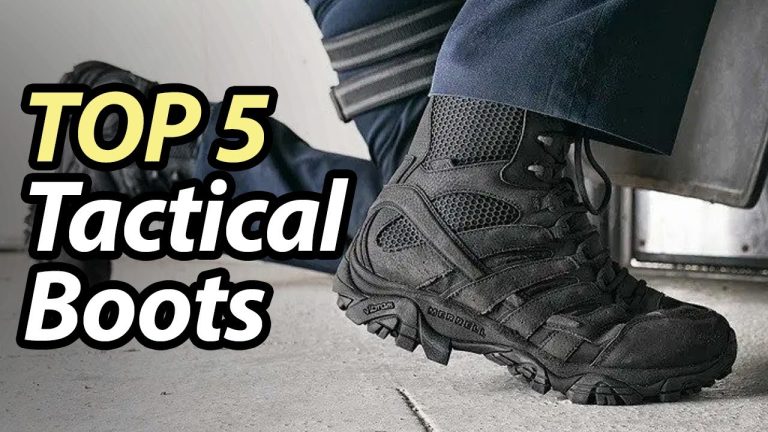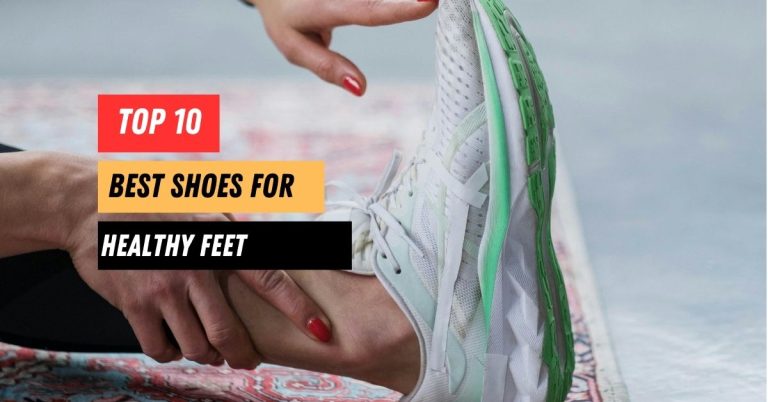10 Best Shoes for Appalachian Trail
Embarking on the Appalachian Trail is an adventure of a lifetime, spanning over 2,190 miles of America’s eastern landscapes. The trail offers varying terrains and weather conditions, making the selection of proper footwear not just a matter of comfort, but a crucial component for safety and performance.
The right shoes can significantly enhance your hiking experience by preventing injuries and minimizing fatigue. As such, it’s essential to choose shoes that are specifically designed to tackle the challenges of the Appalachian Trail. In this guide, we will delve into the importance of selecting the right shoes for this demanding journey and how they can make a difference in your hiking success.
Top 10 Shoe Reviews for the Appalachian Trail
When selecting the best shoes for hiking the Appalachian Trail, there are several factors to consider, including the durability, grip, comfort, and support these shoes provide. Here, we review the top five shoes that meet these criteria, helping you make an informed decision for your next hiking adventure.
Table of Contents
Toggle1. Salomon X Ultra 3 GTX
The Salomon X Ultra 3 GTX is designed specifically for hikers who need speed and stability on tricky terrains. This shoe features an Advanced Chassis, positioned between the outsole and midsole, maximizing motion control and energy management for a stable and responsive ride. The lightweight construction keeps fatigue at bay, while the Gore-Tex membrane ensures your feet stay dry even in wet conditions.
The shoe’s SensiFit system cradles the foot perfectly, offering a snug, customized fit that reduces the risk of blisters and discomfort. Its aggressive lug pattern provides superb traction, making it ideal for the varied surfaces of the Appalachian Trail.
Pros:
- Excellent traction on various terrains
- Waterproof Gore-Tex lining
- Lightweight and comfortable for long hikes
- Snug fit with SensiFit technology
- Durable construction with reinforced toe protection
Cons:
- Expensive compared to some alternatives
- Can be too narrow for wider feet
- Requires a break-in period
2. Merrell Moab 2 Ventilator
The Merrell Moab 2 Ventilator is renowned for its outstanding comfort right out of the box, requiring little to no break-in period. This shoe excels in warm conditions, thanks to its highly breathable mesh upper and ventilated design that keep feet cool and dry. The Vibram TC5+ outsole provides reliable grip on both dry and wet surfaces, enhancing safety on uneven trails.
Additionally, the Moab 2 features a supportive footbed with a zonal arch and heel support, making it ideal for hikers who need extra underfoot comfort. Despite its rugged build, it remains one of the more affordable options for quality trail shoes.
Pros:
- Excellent ventilation for warm weather
- Comfortable with minimal break-in time
- Durable Vibram sole for superior traction
- Affordable price point
- Good arch and heel support
Cons:
- Not waterproof
- May not be suitable for very wet conditions
- Bulkier than some other models
3. La Sportiva Bushido II
La Sportiva’s Bushido II is a top performer for technical terrain, offering exceptional stability and support without compromising on weight. The shoe features an enhanced cushioning system and a slip-on construction that molds to the foot, providing a secure fit that is critical on challenging sections of the trail.
Its aggressive outsole with deep lugs grips onto surfaces firmly, which is perfect for steep and slippery paths. The Bushido II also boasts a breathable yet durable mesh upper with thermoplastic urethane reinforcements for added durability. This model is particularly favored by trail runners and fast hikers due to its lightweight and responsive design.
Pros:
- Extremely stable on technical terrain
- Lightweight and responsive
- Excellent grip with aggressive lugs
- Durable with reinforced materials
- Breathable design
Cons:
- Less cushioned compared to others
- Tight fit may not suit all foot types
- Higher price bracket
4. Altra Lone Peak 5
Altra’s Lone Peak 5 continues to be a favorite among thru-hikers for its balanced blend of durability, comfort, and trail-ready features. It stands out with its FootShape toe box, allowing the toes to spread naturally for better balance and less fatigue. The updated midsole offers enhanced rebound and responsiveness, while the MaxTrac rubber outsole provides great traction across a range of surfaces.
The Lone Peak 5 also includes a protective rock plate that shields the feet from sharp rocks and roots, essential for the rugged Appalachian Trail. Its zero-drop platform encourages a natural stride, making this shoe a solid choice for long-distance hikers.
Pros:
- Natural foot positioning with FootShape toe box
- Excellent traction with MaxTrac outsole
- Responsive and cushioned midsole
- Includes a protective rock plate
- Zero-drop design for natural stride
Cons:
- Might not provide enough arch support for some
- Durability issues in earlier models
- Takes time to adjust to zero-drop design
5. Hoka One One Speedgoat 4
The Hoka One One Speedgoat 4 is highly regarded for its exceptional cushioning and comfort, which is crucial for the long, demanding days on the Appalachian Trail. This shoe features a thicker midsole than traditional trail shoes, offering superior shock absorption and underfoot protection.
The Vibram Megagrip outsole delivers reliable traction in both dry and wet conditions, and the engineered mesh upper provides durability and breathability. The Speedgoat 4’s roomy toe box and the overall fit cater to a wide range of foot shapes, ensuring comfort throughout your hike.
Pros:
- Exceptional cushioning and comfort
- Superior traction with Vibram Megagrip outsole
- Durable and breathable upper
- Roomy toe box
- Well-suited for long-distance hikes
Cons:
- Heavier than some competitors
- May feel too bulky for some users
- Premium price point
6. Adidas Terrex Swift R2 GTX
The Adidas Terrex Swift R2 GTX is built to handle any terrain with speed and agility. This rugged trail shoe features a Gore-Tex lining for waterproof protection while maintaining breathability. Its Traxion outsole offers a superb grip on slippery surfaces, and the bungee lace-up system allows for quick adjustments on the go.
The midsole provides enough cushioning for comfort without sacrificing ground feel, making it ideal for fast hikes across varied landscapes. Durability is enhanced with a Ripstop upper and TPU overlays, protecting the foot from trail debris.
Pros:
- Waterproof and breathable Gore-Tex lining
- Excellent traction with Traxion outsole
- Quick lace-up system
- Durable construction with Ripstop material
- Lightweight and comfortable for long distances
Cons:
- May feel stiff to some users
- Sizing runs slightly small
- Limited color options
7. Scarpa Zodiac Plus GTX
Scarpa’s Zodiac Plus GTX excels in rugged mountainous terrain, offering the support of a boot with the flexibility of a shoe. It features a Gore-Tex Performance Comfort membrane, ensuring your feet stay dry and comfortable in all conditions.
The sock-fit DV construction reduces bulk and enhances fit, while the Vibram Drumlin outsole provides stability and grip on steep ascents and descents. The Perwanger suede leather upper is exceptionally durable, and the rubber rand offers additional protection.
Pros:
- Excellent waterproofing and breathability
- High durability with suede upper
- Superior traction on steep terrain
- Comfortable, precise fit
- Protective rubber rand
Cons:
- Heavier than other trail shoes
- Expensive price point
- Break-in period required
8. Brooks Cascadia 15
The Brooks Cascadia 15 is known for its exceptional versatility and all-terrain capabilities. It features a new engineered mesh upper that provides both stretch and structure, improving breathability and durability. The TrailTack rubber outsole offers outstanding traction in both wet and dry conditions, while the BioMoGo DNA midsole delivers dynamic cushioning that adapts to your stride.
It’s equipped with a rock shield for underfoot protection and stability features that keep you balanced on uneven ground.
Pros:
- Versatile and well-cushioned
- Enhanced breathability and durability
- Excellent traction with TrailTack rubber
- Adaptive cushioning with BioMoGo DNA
- Effective rock shield protection
Cons:
- Fit may be too narrow for some
- Cushioning may be too soft for rugged trails
- Some durability concerns with upper mesh
9. The North Face Ultra 110 GTX
The North Face Ultra 110 GTX is designed for those who require a dependable shoe under all weather conditions on the trail. It features a Gore-Tex waterproof membrane and a durable UltrATAC outsole that provides exceptional grip on wet, slippery surfaces.
The shoe’s robust construction is complemented by an EVA foam midsole that offers sustained comfort and a TPU toe cap for added protection. Its overall stability and support make it an excellent choice for long-distance hiking.
Pros:
- Waterproof and breathable
- Superior traction with UltrATAC outsole
- Comfortable EVA foam midsole
- Durable construction with protective features
- Stable and supportive for long hikes
Cons:
- Relatively heavy
- Can feel stiff and less flexible
- Aesthetic might not appeal to all
10. Columbia Newton Ridge Plus II Waterproof
Columbia’s Newton Ridge Plus II Waterproof is a budget-friendly option that does not skimp on performance. This durable hiking boot features a waterproof leather and synthetic upper, sealed seams, and a lightweight Techlite midsole for long-lasting comfort and superior cushioning.
The Omni-Grip non-marking traction rubber outsole ensures stability on diverse terrains. The boot’s classic design is both functional and stylish, suitable for both trail walks and casual wear.
Pros:
- Affordable and good value for money
- Effective waterproofing
- Comfortable cushioning with Techlite midsole
- Reliable grip with Omni-Grip outsole
- Stylish design
Cons:
- May require a break-in period
- Not as breathable as other models
- Slightly heavier than more specialized trail shoes
Buyer’s Guide
Selecting the Best Shoes for the Appalachian Trail
Durability: When selecting the best shoes for the Appalachian Trail, durability tops the list of criteria. The rugged terrain can quickly wear down lesser materials. Look for shoes crafted from high-quality, robust materials that can withstand constant exposure to rocks, roots, and mud. Reinforced toe boxes and abrasion-resistant uppers are excellent features that enhance durability.
Grip and Traction: The trail’s diverse environments — from slick rock faces to muddy forests — demand superior grip and traction. Shoes with deep, aggressive lug patterns made from sticky rubber compounds offer the best performance on varied surfaces. These soles ensure stability and safety, allowing hikers to navigate slippery sections without fear of losing their footing.
Comfort and Fit: Comfort is critical, as hikers spend long days on their feet. Shoes that fit well and offer adequate support are vital. Look for options with good arch support and cushioning to help absorb the impact of long treks. Additionally, consider the fit of the shoe; it should be snug enough to prevent movement inside the shoe but also allow for natural swelling that occurs during a hike.
Breathability and Waterproofing: Breathability is another important factor, especially in warmer weather. Shoes with mesh panels and moisture-wicking liners help keep feet dry and cool. However, waterproofing is equally important for rainy days and crossing streams. Materials like Gore-Tex are ideal as they offer both waterproof protection and breathability, ensuring comfort in all weather conditions.
Weight: Lighter shoes reduce fatigue over long distances, but they must still offer adequate protection and support. Finding the balance between weight and functionality is key, as overly heavy footwear can lead to quicker exhaustion on the trail.
Height: Low, mid, or high-top shoes offer different levels of ankle support. Mid or high-tops are advisable for those with previous ankle issues or who prefer additional support. However, low-tops can be suitable for more experienced hikers looking for flexibility and a lighter option.
FAQ
1. What is the best type of shoe for the Appalachian Trail?
The best type of shoe depends on personal preference and hiking experience, but generally, lightweight, durable hiking boots or trail runners with good grip and ankle support are recommended.
2. How often should I replace my shoes on the Appalachian Trail?
Replace your shoes every 500 to 700 miles, depending on the shoe’s durability and how they feel on your feet. Signs of wear like diminished cushioning and worn-out soles indicate it’s time for a new pair.
3. Are waterproof shoes necessary for the Appalachian Trail?
Yes, waterproof shoes are beneficial for keeping your feet dry during rainy conditions and when crossing streams. They can prevent blisters and other foot issues caused by wet feet.
4. What’s the difference between trail runners and hiking boots for the Appalachian Trail?
Trail runners are lighter and more flexible, offering comfort and quicker movement, whereas hiking boots provide more durability, support, and protection against harsh terrain.
5. How should Appalachian Trail shoes fit to avoid blisters and discomfort?
Shoes should fit snugly around your heel and midfoot with enough room in the toe box to wiggle your toes. Ensure there’s enough space to accommodate slight foot swelling during long hikes.
6. Can I use regular running shoes on the Appalachian Trail?
Regular running shoes lack the necessary traction, durability, and support for rugged trail conditions. It’s best to use shoes designed for trail activities.
7. What features should I look for in a shoe’s sole for the Appalachian Trail?
Look for soles with deep, aggressive lugs for optimal traction, made from a durable rubber compound. A protective rock plate can also be beneficial to shield your feet from sharp objects.
Conclusion
Choosing the right footwear for the Appalachian Trail is paramount, as it directly influences your safety and hiking experience. The appropriate shoes provide necessary traction, support, and protection, ensuring functionality and durability across the challenging terrains of this extensive trail. Prioritize these elements to enhance your journey and safeguard your adventure.







